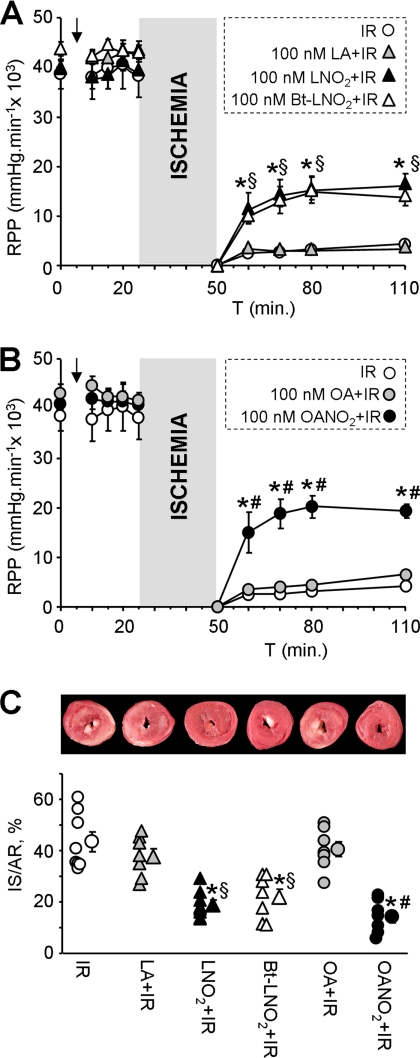FIGURE 1.
Cardioprotective effects of nitroalkenes in perfused mouse hearts. A and B, perfused hearts were subjected to IR injury with or without infusion of agents (see “Experimental Procedures”). Left-ventricular contractile function was monitored, and graphs show rate × pressure product (RPP). For clarity, experimental groups with linoleate-based and oleate-based treatments are shown in two separate panels, although the IR alone group is the same in each panel. Final concentration of nitroalkenes and related reagents was 100 nm. Data are the means ± S.E., n ≥ 7; *, p < 0.05 versus IR alone; §, p < 0.05 versus IR + LA; #, p < 0.05 versus IR + OA (analysis of variance). C, following IR protocols, hearts were stained with 2,3,5-triphenyltetrazolium chloride, and infarct size was measured as the % of the left ventricular area. The upper images show representative 2,3,5-triphenyltetrazolium chloride-stained hearts. In the graph, infarct is quantified, with individual data points for each condition shown on the left and the means ± S.E. on the right (n ≥ 7). *, p < 0.05 versus IR alone; §, p < 0.05 versus IR + LA; #, p < 0.05 versus IR + OA (analysis of variance). IS/AR, infarct/area-at-risk.

